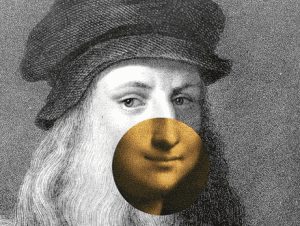Title of Artwork: “The Metaphor of the Palm Tree”

Artwork by Ende
Year Created 975
Summary of The Metaphor of the Palm Tree
Beatus of Liébana referred to the palm leaves the righteous hold as “palmas in manibus eorum” in his interpretation of the righteous. That’s what prompted him to interrupt Tyconius’s recording of his commentary on the Apocalypse and insert a digression from Gregory’s Moralia in Iob, in which the saint’s life is compared to a palm tree, which has a harsh base but an appealing fruit-laden top. As a result, life on Earth for the righteous is filled with hardships, but once they reach Paradise, their perspective broadens owing to the immense benefits.
All About The Metaphor of the Palm Tree
The roots of the palm tree are narrower, but the branches and fruit of the palm tree are robust; similarly, the virtuous are not strong in earthly chores, but rather in spiritual ones.. Across the verso, there is an image of a schematic and exceedingly attractive tree with two split canes joined together as roots.
From this, a trunk grows and extends upwards into an ornamental crown of enormous, colourful and abstract branches with fruit at the tip. There is a naked man with the words “u[bi] hic omo cupiens crapulare/palme” tucked inside the trunk’s sleeve (To this man who seeks to take his fill of the fruit of the palm tree).
Assisting the man to the left of the composition in a loincloth, he holds a pruning knife in his right hand and a piece of rope strung through the tree’s trunk hook.
The phrase above reads “and his alter iubamine porrigit per fune” As a commentary on Beatus of Liébana’s commentary, the two figures enhance its meaning by depicting both body and soul travelling higher, with the rope symbolising Holy Trinity and palm tree signifying Christ.
Those who seek salvation after death are helped by religion in their ascension toward Glory, which is understood to be a perfect state of bliss based in any case on a doctrinal rather than a pre-apocalyptic concept, possibly by St Gregory the Great in the lines: “Ascendam in palmam et apprehendam fructus eius” (Ascension in Palms and Appreciation of Fruits).
As a result, the Gerona Beatus involves a semantic change that shifts the palm tree’s meaning from representing the virtuous to representing Christ. Thus, the palm tree symbolises Christ’s cross, which he ascends to collect his fruit.
All Beatus depicts these images without a frame since they are based solely on their explanatory content rather than their narrative context, and this is true of both this image and the map of the world. Stemma I and II, on the other hand, differ amongst manuscripts.
A stylized trunk and green crown are all that’s needed to depict the palm tree in the first illustration, while its roots are left uncovered in the second. Stemma II adds characters to the scenario.
Branch IIa shows the righteous surrounding the tree, often clutching palm leaves, thus uniting the two aspects (the palm tree and the chosen ones) linked with Beatus’s exegesis, while branch IIb covers the full folio or a large portion of it, with the image. St Gregory’s metaphoric discourse is reflected in a scene depicting fruit being harvested and a man wielding a pruning hook to cut it down – only the Gerona Beatus and its copy depicts the assistant – in a manner more in line with the doctrinal aspect mentioned above, which must have featured in the prototype of branch IIb, as demonstrated by the Las Huelgas Beatus (f. 85r). This branch is a more accurate representation of the text since it represents short roots, whereas the roots in IIa spread out to produce a strip of ground upon which the chosen ones stand.
We can rule out this artwork and mappa mundi from the Tyconian archetype, which is said to be the inspiration for the Apocalypse cycle’s illustrations. Similarly, the palm tree’s shape and the harvesting theme are based on Islamic models that can be found in Arabian ivory depictions of the same subject.
Contemporary Cordovan ivories, such as this Hispano-Islamic chest (Braga, Cathedral Museum), depict date harvests among other festive themes including musicians, goblet bearers, and peacocks. He believes the Gerona Beatus palm tree is based on Islamic heaven iconography, which depicts the duties and tree of life as a single entity.
Information Citations
En.wikipedia.org, https://en.wikipedia.org/.
Recommend0 recommendationsPublished in Art History, Artworks





Responses